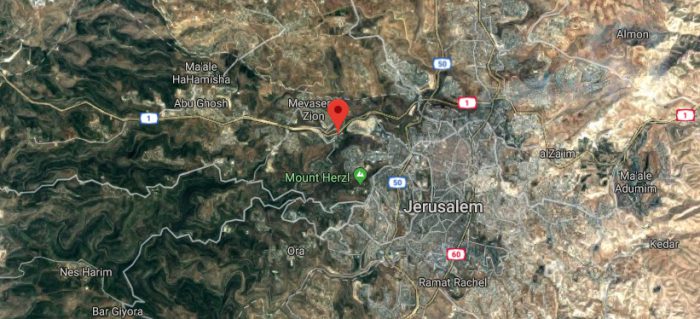Roads. Humans build a lot of them. Before they do, surveyors head out and measure the land to make sure everything is A-OK for a highway to be there. They look like this person.
A surveyor helping to plan a road in Pakistan. (Getty Embed).
Usually, they come back with something like, "Yep, it's all good, though I would make this turn here instead, and this one area of land is a bit too steep, so let's move the whole thing 400 metres..." and so forth.
And then other times, the report is all, "You know that spot you want to build a road? Actually, we think there might be a 9,000 year-old city there..."
Wait, what?
Neolithic city
Unearthing this city has been tough work. That's a lot of dirt to remove! (Getty Embed).
Sounds wild, but that is pretty much what happened near the Israeli town of Motza in 2015. Archeologists arrived on site and quickly discovered jewelry, weapons, tools, art, and other artifacts. Then work began on seeing just what was hidden beneath the surface.
Four years later, experts can confirm that it is indeed an ancient city. And an amazing one. At its peak, this city probably would've held between 2,000 to 3,000 people. In modern terms, that's barely a small town. But at that time in history, this would have been a major city — maybe even one of the largest in the world.
Archeologist Hamoudi Khalaily discusses one of the hundreds of artifacts found here. (Getty Embed).
It is at least 2,000 years older than any nearby site, as well as older than the Great Pyramids of Egypt. It dates back to the Neolithic Age (12,000 to 6,500 BCE), or New Stone Age. This was a time when early humans were beginning to make more sophisticated societies and tools. And these ruins show some of the ways in which these changes were happening.
Spacious neighbourhoods
The excavation site at Motza. Though the walls crumbled ages ago, you can still see the bases of the buildings clearly. (Getty Embed).
One of the biggest problems of big city life is overcrowding. Other cities that date back to this time — in particular one in Turkey called Catalhoyuk — feature building after building that literally share walls. The city is a few massive buildings and experts believe residents would've had to climb out with ladders.
This city however, has thin alleyways in between buildings. This shows that the builders were thinking about how people would get around the buildings they built.
All of these artifacts were once a part of a city's everyday life. What artifacts would you leave behind? (Getty Embed).
Archeologists also found evidence of food — including places to store lentils and chickpeas, and proof that they raised livestock like cows, pigs, and goats — and of trade, too. There were items that at the time would've come from cities around the Mediterranean and Red Seas.
What else will this city's ruins tell experts? Did it have a name? We're excited to find out!
 This ancient city was found in the Israeli neighbourhood of Motza, which is just west of Jerusalem. (Google Maps)
This ancient city was found in the Israeli neighbourhood of Motza, which is just west of Jerusalem. (Google Maps)










WOOOOOOAAAAAAAAHHH x 200
I’ll bet that this is why we’re like the “rulers of the world”-because some of our ancestors’ times are like ours, we know a thing or two about living like bosses.
OKAY BUDY 😐 😀
Cool
That is cooool. 😀
THIS IS SO EXCITING